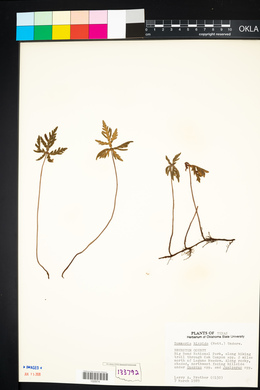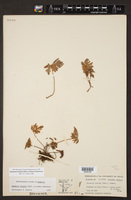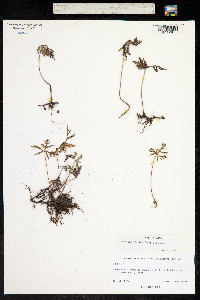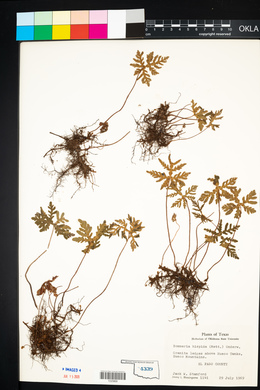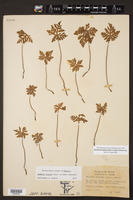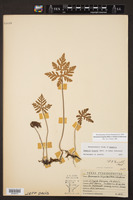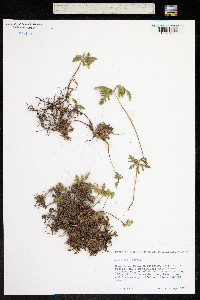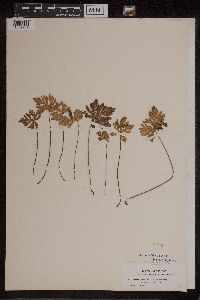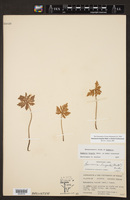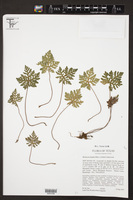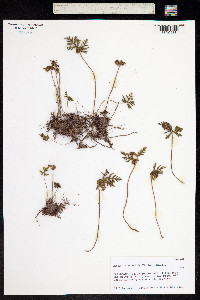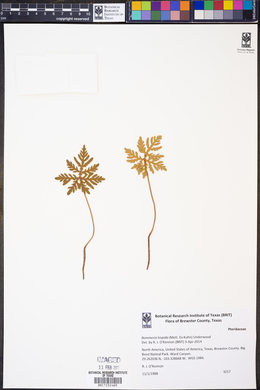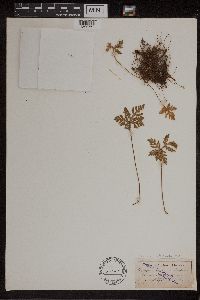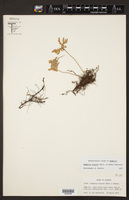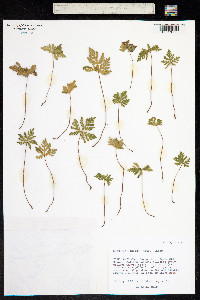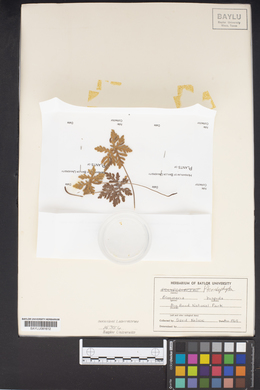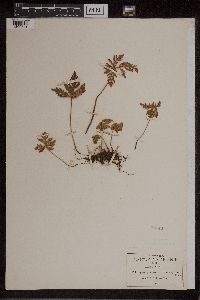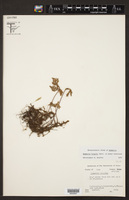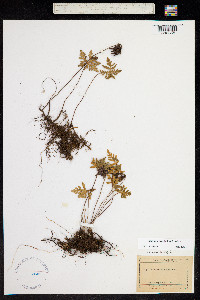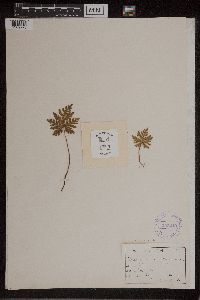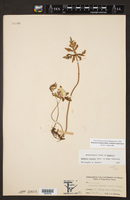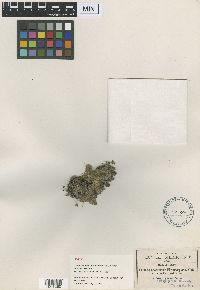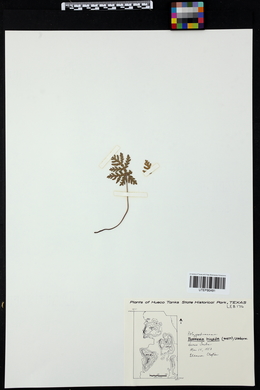Bommeria hispida
|
|
|
|
Family: Pteridaceae
Copper Fern
[Bommeria schaffneri, moreGymnogramma ehrenbergiana var. muralis , Gymnogramma hispida , Gymnopteris hispida (Mett. ex Kuhn) Underw., Hemionitis hispida (Mett. ex Kuhn) Christenh.] |
Stems long-creeping and often branched. Leaves arising at 7--10 mm intervals. Petiole generally rounded (but distally grooved in some large leaves); indument of scales proximally, of scales and trichomes distally, central portion generally glabrous. Blade 1--7 cm, about as long as wide; ultimate segments rounded at apex; abaxial indument of scales (commonly with 10+ cells across base), unicellular needlelike trichomes (0.75--1.12 mm), and unicellular coiled trichomes (ca. 1--2 mm); adaxial indument of unicellular needlelike hairs 0.47--1.11 mm, arising from unspecialized basal cells; rachis chestnut brown. Veins free. Sporangia covering 2/3--3/4 distance from margin of blade to costa of each ultimate segment. Spores 64 per sporangium; perispore surface crested. 2 n = 60. Sporulating summer--fall. At bases of large boulders on dry to moist slopes, primarily in mountainous, xeric regions; occasionally forming large mats; 1000--2500 m; Ariz., N.Mex., Tex.; Mexico. Bommeria hispida is the only member of this genus to occur north of Mexico. It is the most morphologically distinct species in the genus, having a relatively small leaf size, dissected segments, and copious and diverse leaf indument. Natural hybrids involving B . hispida are unknown. The pedate blade shape, lack of colored farina abaxially, and presence of both needlelike and coiled trichomes abaxially serve to distinguish this species from sympatric members of Cheilanthes , Notholaena , and Pentagramma . Reports of Bommeria hispida in California (C. H. Haufler 1979) are based on old specimens with questionable locality data.
General: Stems prostrate, long-creeping, often branched, scales pale brown to yellowish, lanceolate, entire margins. Leaves: Monomorphic, scattered, arising at 7-10 mm intervals; petiole generally rounded, indument of scales proximally, of scales and trichomes distally, central portion generally glabrous; blade 1-7 cm, about as wide; ultimate segments rounded at apex, indument of scales beneath, unicellular needlelike trichomes 0.75-1.12 mm, and coiled trichomes 1-2 mm; rachis chestnut brown; veins free. Sporangia: Covering two-thirds to three-quarters from margin of blade to mid-vein of each ultimate segment. Ecology: Found at bases of large boulders on dry to moist slopes, occasionally forming large mats from 3,500-8,500 ft (1067-2591 m); sporulating summer-fall. Notes: Only member of the genus to occur north of Mexico. The pedate blade shape, lack of colored farina below, and presence of both needlelike and coiled trichomes help to distinguish the species. Can be confused with Pentagramma and some Notholaena species, but it is more gray in color and the leaf shapes are all slightly different. Etymology: Bommeria is named for Joseph Edouard Bommer (1829-1895) a Flemish botanist, while hispida means rouch with bristly hairs. Sources: FNA 1993 FNA 1993 Common Name: copper fern General: Stems prostrate, long-creeping, often branched, scales pale brown to yellowish, lanceolate, entire margins. Leaves: Leaves monomorphic, scattered, arising at 7-10 mm intervals; petiole generally rounded, indument of scales proximally, of scales and trichomes distally, central portion generally glabrous; blade 1-7 cm, about as wide; ultimate segments rounded at apex, indument of scales beneath, unicellular needlelike trichomes 0.75-1.12 mm, and coiled trichomes 1-2 mm; rachis chestnut brown; veins free. Sporangia: Covering two-thirds to three-quarters from margin of blade to mid-vein of each ultimate segment. Ecology: Found at bases of large boulders on dry to moist slopes, occasionally forming large mats from 3,500-8,500 ft (1067-2591 m); sporulating summer-fall. Notes: Distinguished by 3-pinnate, pentagonal blades due to enlarged basal pinnae that are angled downward; the top surface of blades have short, straight hairs on the bottoms are crowded with curly hairs; the bottom surfaces also lack white or yellow small grains (farina). Can be confused with Pentagramma and some Notholaena species but differ by the combined characters above. Only member of the genus to occur north of Mexico. Ethnobotany: Unknown Etymology: Bommeria is named for Joseph Edouard Bommer (1829-1895) a Flemish botanist, while hispida means rouch with bristly hairs. Synonyms: Gymnopteris hispida Editor: SBuckley 2010, FSCoburn 2015 |
|
|
|










































